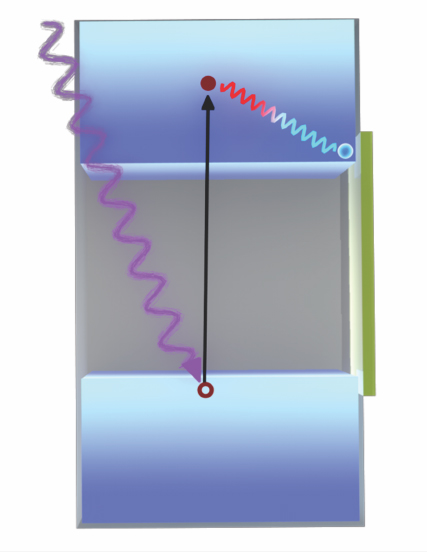Research
Research Agenda
The Mesoscale Materials Lab explores how symmetry-breaking and structure drive the flow of energy in solids, particularly ferroic materials, including charge and spin-carriers, lattice, and also via the interaction of light with matter.
It is well known how the properties of solids arise from their symmetry, whether this is defined within the bulk interior or by the presence of a surface or interface. We study how symmetry-breaking at different length scales can alter the interaction(s) of fields and electromagnetic energy with matter, challenging conventional notions about the behavior of materials and their properties.
We utilize materials design, film growth, and materials and device characterizations in tandem with computational modeling and simulation to control lattice and electronic degrees of freedom and structure. These efforts permit study of excitation phenomena that can be used to capture, convert, carry, and convey energy and information. High-quality epitaxial complex oxide and nitride films grown in the lab offer an exciting palette for exploring emergent structure-properties relationships. Areas of application of our research include energy conversion and information and communications technology.

Our Mission
The lab aims to provide vibrant research training experiences in a multi-disciplinary mentoring environment. Team members work collaboratively to advance understanding of how, for example, chemical design and engineered defects may markedly improve physical and functional properties of materials, particularly ferroics, even enabling new functionalities. We study the growth of epitaxial thin films, the static and dynamic properties of ferroic and multiferroic thin films, the interaction of light with solids, and the tunable dielectric response and dielectric loss in microwave materials and devices.
Collaborators
- Andrea Alù (CUNY Advanced Science Research Center)
- John A. Baniecki (SLAC)
- Simon Billinge (Columbia University)
- Geoff Brennecka (Colorado School of Mines)
- Srabanti Chowdhury (Stanford University)
- Kathleen Coleman-Walter (Army Research Laboratory)
- Christopher Danes (UC Berkeley)
- Peter K. Davies (University of Pennsylvania)
- Peter Finkel (Naval Research Laboratory)
- Vladimir M. Fridkin
- Ilya Grinberg (Bar-Ilan University)
- P. Shiv Halasyamani (Univ of Houston)
- Geoffroy Hautier (Dartmouth College)
- Brendan Hanrahan (Army Research Laboratory)
- Deep Jariwala (University of Pennsylvania)
- James M. LeBeau (MIT)
- Lane W. Martin (Rice University)
- Thomas Mion (Naval Research Laboratory)
- Jeffrey B. Neaton (University of California at Berkeley and LBNL)
- Stephen S. O’Brien (CUNY)
- Roy (Troy) Olsson (University of Pennsylvania)
- Ramamoorthy Ramesh (Rice University)
- Andrew M. Rappe (University of Pennsylvania)
- Darrell Schlom (Cornell University)
- Eric Stach (University of Pennsylvania)
- Margo Staruch (Naval Research Laboratory)
- Arturas Vilionis (Stanford University)
- Robert A. York (University of California at Santa Barbara)
Our Laboratory
Our facilities includes several growth chambers for pulsed laser deposition of high-quality epitaxial complex oxide and nitride films, including reflection high-energy electron diffraction-controlled, and systems for DC and RF sputtering and post-growth processing. The lab has a state-of-the-art in lab-scale X-ray diffractometer for structural analysis, including fast reciprocal space mapping. The lab possesses capabilities for variable-temperature characterization of carrier transport and impedance from DC to microwave frequencies, scanning probe microscopy, and a laser spectroscopy lab enabling high-resolution inelastic light scattering, photoluminescence and photocurrent spectroscopies with several magnets and optical wavelength-tunable laser sources, and a optical and a closed-cycle magneto-optic cryostat permitting study of solids under excitation from the UV to the IR, at temperatures down to 4.2 K, magnetic fields to 7 T, and under different atmospheres. The lab also has a two-port microwave vector network analyzer configured for on-wafer two-port bias- and frequency-dependent microwave spectroscopy characterizations extending into the mm band, for examining interdigitated and parallel-plate capacitor geometries, as well as co-planar waveguide structures.
We also utilize Drexel’s Materials Characterization Core, which includes X-ray diffractometers, X-ray photoelectron spectroscopy, transmission, and scanning electron and focused ion beam microscopes. The Quattrone Nanofabrication Laboratory within the Singh Center for Nanotechnology is used for device fabrication. We also use the University Research Computing Facility for some of our modeling and simulation work.

